Berwick-upon-Tweed, Northumberland
Up to 1834
A parliamentary report of 1777 recorded a local workhouse in operation in Tweedmouth for up to 36 inmates.
After 1834
Berwick-upon-Tweed Union formally came into existence on 21st November 1836. Its operation was overseen by an elected Board of Guardians, 30 in number, representing its 17 constituent parishes and townships as listed below (figures in brackets indicate numbers of Guardians if more than one):
The Town and County of Berwick-on-Tweed (9)
County Durham:
Ancroft (2), Cornhill, Duddo, Felkington, Grindon, Holy Island, Horncliffe, Kyloe, Loan End, Longridge, Norham Mains, Shoreswood, Thornton, Twizell, Tweedmouth (5).
The population falling within the union at the 1831 census had been 20,782 with parishes and townships ranging in size from Longridge (population 105) to Berwick itself (8,920). The average annual poor-rate expenditure for the period 1834-36 had been £8,442 or 8s.1d per head of the population.
The new union took over an existing workhouse building in Berwick dating from the early nineteenth century which had originally been a sack manufactory. The building had a main H-shaped block with a separate block at the west housing the boys' school room, hospital and vagrants' wards. The entrance to the workhouse was via a narrow lane along the south of the site from Featherbed Lane (now Brucegate) to the east. The site layout is shown on the 1852 map below.
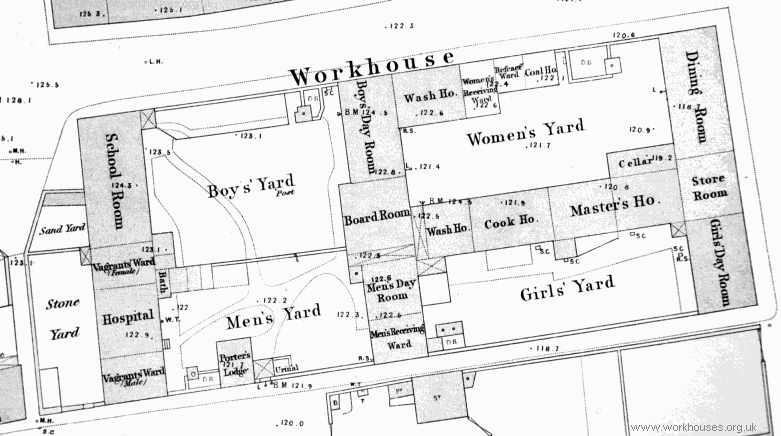
Berwick workhouse site, 1852.
Between 1852 and 1898, the dining room was demolished, and wings added at the east of the school/hospital block. The workhouse layout in 1898 is shown below.
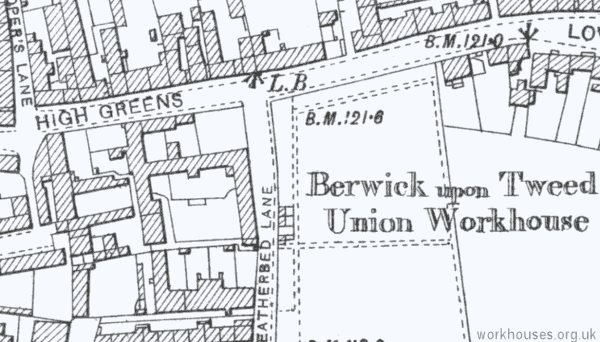
Berwick workhouse site, 1898.
The north-west wing of the main block housed boys' accommodation and the Guardians' board-room.
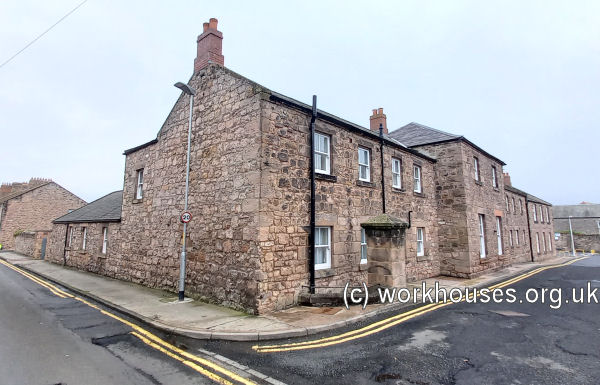
Berwick-upon-Tweed workhouse boys' wing and Guardians board-room from the north-west, 2020.
© Peter Higginbotham.
The south-west wing housed adult males. The girls' yard and quarters were to its east.
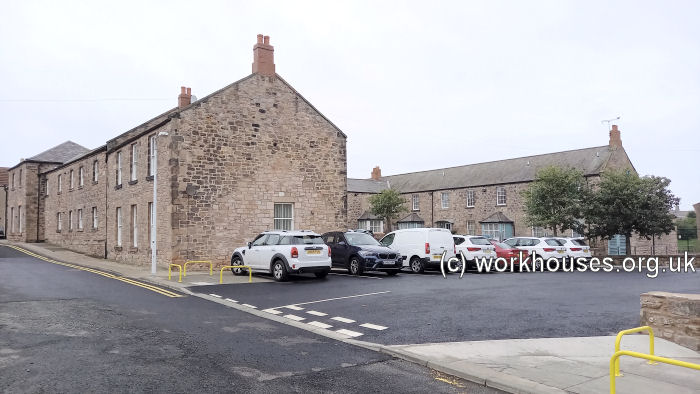
Berwick-upon-Tweed workhouse main building from the south-west, 2020.
© Peter Higginbotham.
The central wing of the main building contained the Master's house and kitchens.

Berwick-upon-Tweed workhouse main building from the south during redevelopment, 2001.
© Peter Higginbotham.
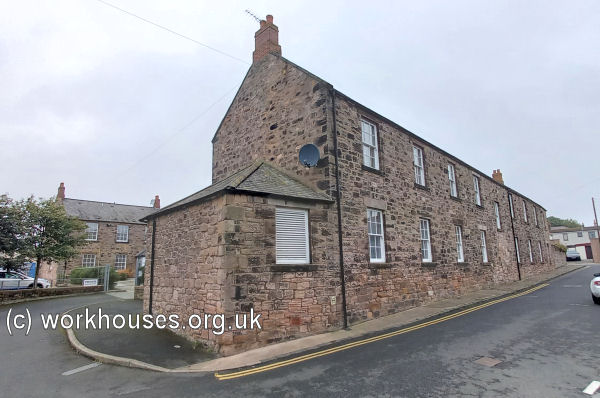
Berwick-upon-Tweed workhouse girls' wing from the south-east, 2020.
© Peter Higginbotham.
The women's yard lay at the north of the main building, with a dining room on the ground floor at its east side.
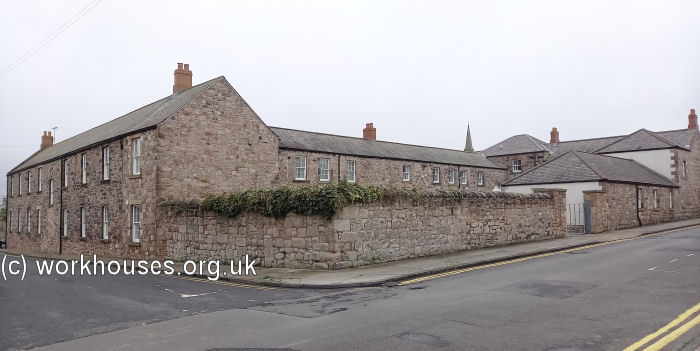
Berwick-upon-Tweed workhouse main building from the north-east, 2020.
© Peter Higginbotham.
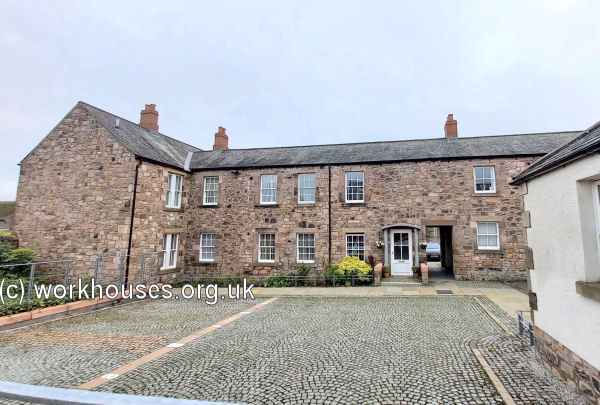
Berwick-upon-Tweed workhouse women's yard from the north, 2020.
© Peter Higginbotham.
The workhouse had separate boys' and girls' schools and admitted the children of paupers on out-relief. In 1866, there were seven pupils from the workhouse and around eighty from outside.
The former workhouse later became a geriatric hospital linked with the Berwick Infirmary which stands just to its south-east. The hospital block was demolished in around 1990 to make way for a new maternity unit. In 2001, the surviving buildings were redeveloped for use as housing.
Staff
Inmates
- Births and Baptisms 1837-73
- Long-term workhouse inmates (1861)
- 1841 Census
- 1851 Census
- 1861 Census
- 1871 Census
- 1881 Census
- 1891 Census
- 1901 Census
Records
Note: many repositories impose a closure period of up to 100 years for records identifying individuals. Before travelling a long distance, always check that the records you want to consult will be available.
- Berwick-upon-Tweed Record Office, Council Offices, Wallace Green, Berwick-upon-Tweed TD15 1ED. Holdings include: Guardians' minute books (1840-1919); Births and deaths registers (1837-1914); Children's Home admissions order book (1912-21); etc.
Bibliography
- Higginbotham, Peter The Workhouse Encyclopedia (2014, The History Press)
Links
- The union's early correspondence with the central poor-law authorities is online on the TNA website .
Unless otherwise indicated, this page () is copyright Peter Higginbotham. Contents may not be reproduced without permission.


